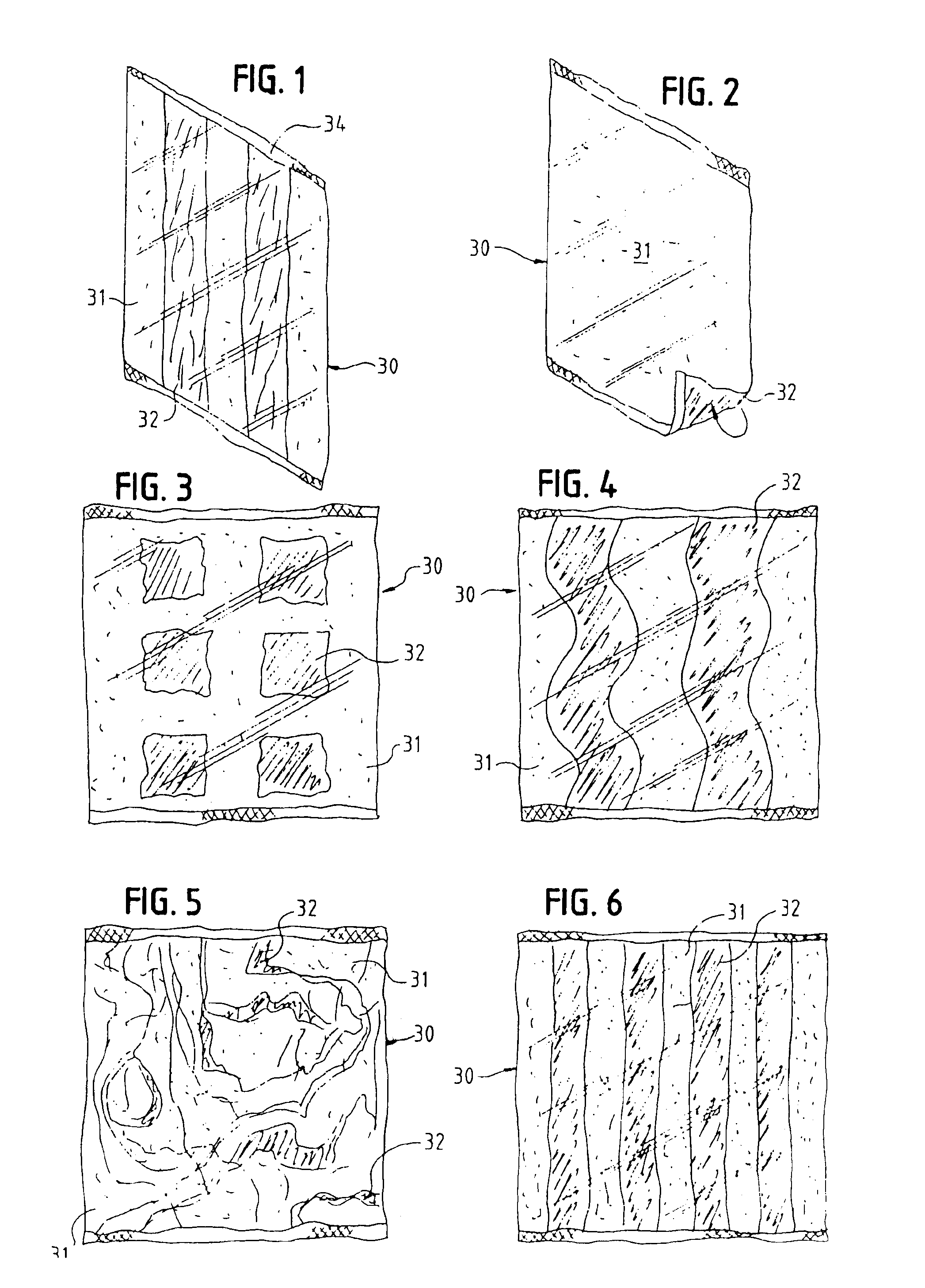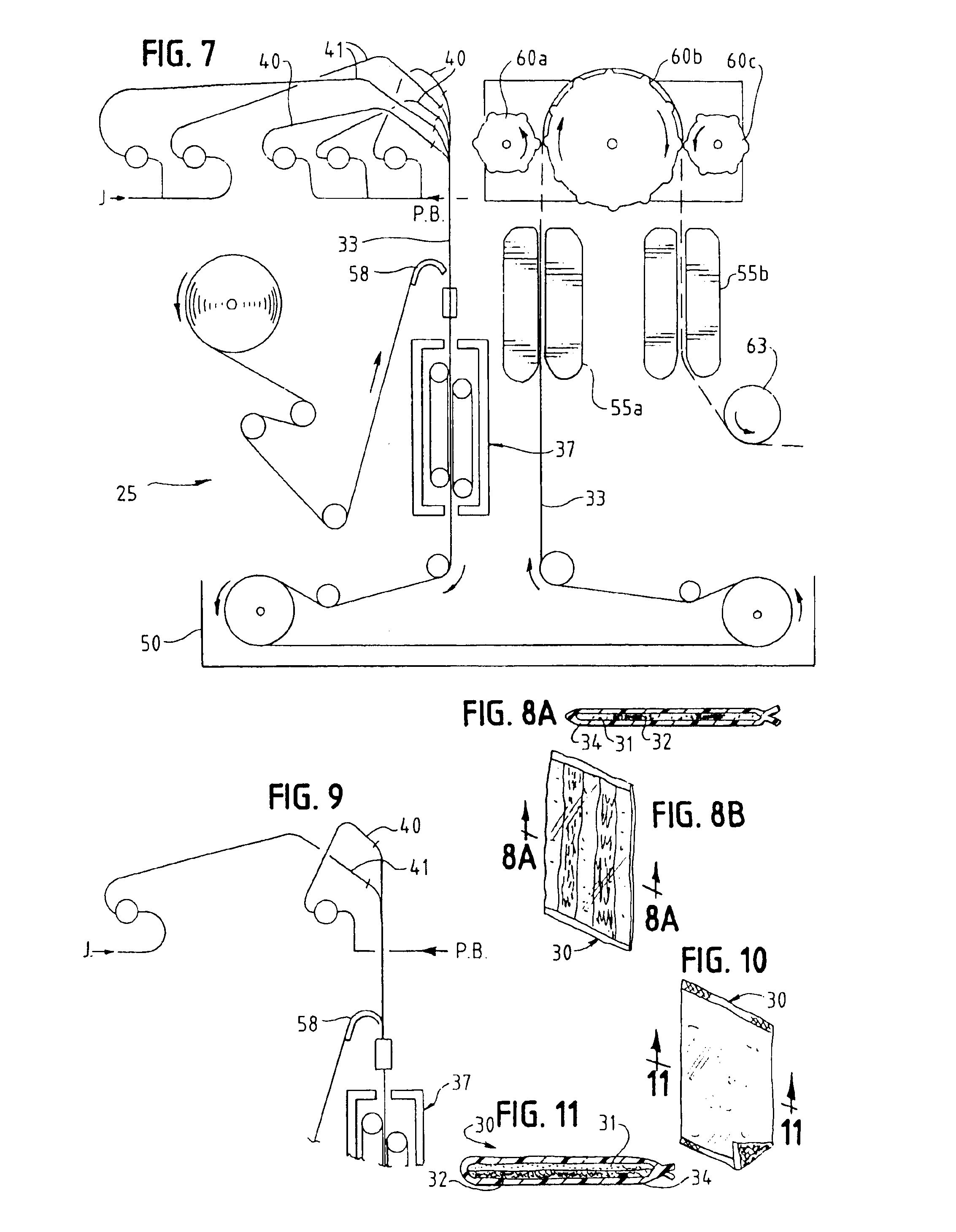Method for packaging a composite food portion
a technology of composite food and food portion, applied in the field of food slice, can solve the problems of too thick solid residue to pump, poor gel formation of finished product gel, etc., and achieve the effects of reducing sugar content, reducing foaming during cooking, and improving extrusion performan
- Summary
- Abstract
- Description
- Claims
- Application Information
AI Technical Summary
Benefits of technology
Problems solved by technology
Method used
Image
Examples
jelly example 1
High Aw Jelly
[0095]A grape jelly formulation found useful in the present invention has the following ingredients:
[0096]
IngredientPoundsWeight PercentageGrape Juice Concentrate21.410.7Sucrose80.040.0Low methoxyl pectin3.01.5Slow set pectin4.02.0Citric acid solution2.01.0Water (as steam)16.08.0Water73.636.8
This formulation corresponds to a traditional type jelly except for the types of pectins used. Due to viscosity requirements during formation of the slices, the low methoxyl pectin adds thickness while the jelly is hot and flows well. As the packages are filled, formed into a slice, and then cooled, the slow set pectin then provides the proper finished texture in the slice. The two types of pectins are thought to operate at different temperature ranges, but each may contribute to the primary viscosity function of the other. The concentrations listed above were found to be optimal given the cooking, conveying, and extruding systems described here, but may be modified to conform to a ...
jelly example 2
Low Aw Jelly
[0098]Another grape jelly formulation found useful with the present invention, but which does not conform to the definition of “fruit jelly” as described in the U.S. Federal Code of Regulations, § 21:150.140, has the following ingredients:
[0099]
IngredientsPoundsWeight PercentageGrape juice concentrate25.012.5Fructose58.429.2Glucose24.212.1Konjac flour / carrageenan mixture2.01.0Slow set pectin4.02.0Citric acid solution1.00.5High fructose corn syrup63.431.7Vegetable oil21.0Water (as steam)2010Water (as needed)00
This grape jelly spread formulation emulates traditional jelly for flavor and mouth feel while providing a lower water activity with excellent separation and manipulation qualities. Due to viscosity requirements in making the slices, the konjac / carageenan mix (Nutricol® DG474, FMC, Inc., Philadelphia, Pa.) provides excellent viscosity enhancing properties in a high sugar carbohydrate environment. The use of high fructose corn syrup and the use of the two granular sug...
example 1
NUT BUTTER EXAMPLE 1
Low Aw Nut Butter
[0103]A preferred nut butter formulation according to the present invention which also conform to the definition of “peanut butter” described in the U.S. Federal Code of Regulations, § 21:164.150, has the following ingredients:
[0104]
IngredientsPoundsWeight PercentagePeanut butter14874Peanut flour4623Stabilizers62
Peanut flour provides a firmer slice consistency. The stabilizer used is Grindsted PS 105 K (Danisco Ingredients, New Century, Kans., melting point of 165° F.), and is an example of a hard fat that may be used to prevent oiling-off. It has been found that the addition of such a stabilizer, in about twice the amount normally found in commercially available peanut butter, helps to firm the slice and to control oiling-off during slice formation and cooling.
PUM
| Property | Measurement | Unit |
|---|---|---|
| viscosity | aaaaa | aaaaa |
| viscosity | aaaaa | aaaaa |
| temperature | aaaaa | aaaaa |
Abstract
Description
Claims
Application Information
 Login to View More
Login to View More - R&D
- Intellectual Property
- Life Sciences
- Materials
- Tech Scout
- Unparalleled Data Quality
- Higher Quality Content
- 60% Fewer Hallucinations
Browse by: Latest US Patents, China's latest patents, Technical Efficacy Thesaurus, Application Domain, Technology Topic, Popular Technical Reports.
© 2025 PatSnap. All rights reserved.Legal|Privacy policy|Modern Slavery Act Transparency Statement|Sitemap|About US| Contact US: help@patsnap.com



